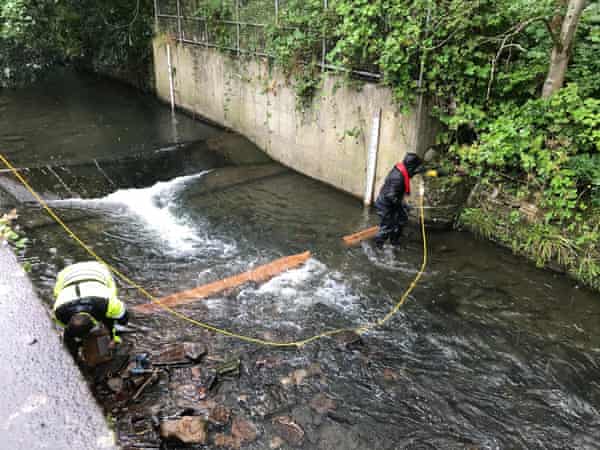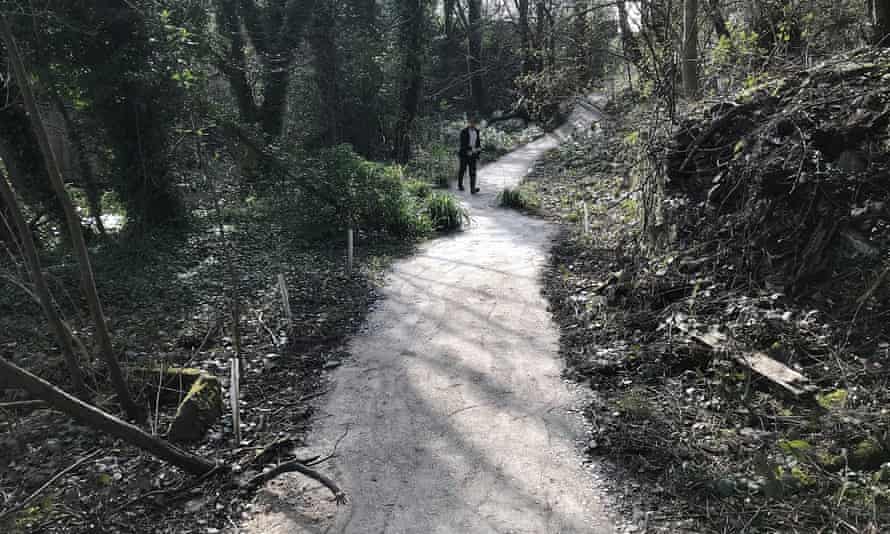It was once known as the filthiest river in England but these days, Bradford Beck is hardly known at all. Much of its seven-mile (11km) route is culverted, meaning its course runs through tunnels constructed beneath the city centre, even passing unnoticed under Bradford city hall.
But its anonymous status might be about to change, after the completion of a restoration project which aims to improve the natural ecology and biodiversity of the beck and surrounding woodland across an urbanised stretch in Shipley.
“Most people who live here don’t even realise there is a river,” says Barney Lerner, chair of ecological campaign group Friends of Bradford’s Becks (FoBB). “I wanted to improve Bradford Beck by making it more accessible, cleaner and more ecologically thriving.”
The restoration project has seen rolls of natural fibre attached to the edges of the beck to help establish riverside plants and create varied habitats for fish and invertebrates.

New native trees, shrubs and wildflowers have also been planted near the beck to create a better habitat for birds and animals, in part by slowing the water flow to allow the beck to sustain greater wildlife populations.
In addition, a new path has been built to allow public access down to the river where people can see wildlife including woodland birds, herons, ducks and fish.
“As the plants grow they begin to tie the coir rolls down and make the whole river greener and more natural,” says Lerner. “The other important element is new footpaths so that people can actually get to see it.”
The project was primarily funded by the Environment Agency, with additional funding from Bradford council and technical support from FoBB volunteers.
Ineke Jackson, project manager at the Environment Agency, said: “We’re excited to create more room for nature in this very urbanised section of Bradford Beck. As it flows through Shipley, the beck is enclosed in very steep banks. These works aim to let the beck flow more naturally within the available space and help both people and wildlife make the most of their local river.”
Andrew Mindham, project manager at Bradford city council, said: “We are very pleased that the planned works are now complete. This marks the final year of a three-year programme to restore some of the ecological value of Bradford Beck that had been lost as a result of human activity over many years.”

During its Victorian heyday, Bradford Beck – “Mucky Beck”, as it was (and still is, by some older Bradfordians) affectionately known – played a central role in the development of the city. Bradford even takes its name from the “Broad Ford”, a major river crossing located near to present-day Church Street.
Unculverted, the river was an important source of power for the city’s growing wool mills and factories, but this meant it was severely polluted. In 1867, 2m gallons of sewage water were being pumped into the beck every day.
With the mills long gone and the river largely underground, the smell is far more bearable, but it remains an “intermittent problem”, says Lerner.
“Some days you can go along and it’s crystal clear, but then other days it’s either murky white or cloudy grey, and that’s when the smell can be a real problem. We’ve spent a lot of time finding and reporting sewage problems and slowly things are getting fixed.”